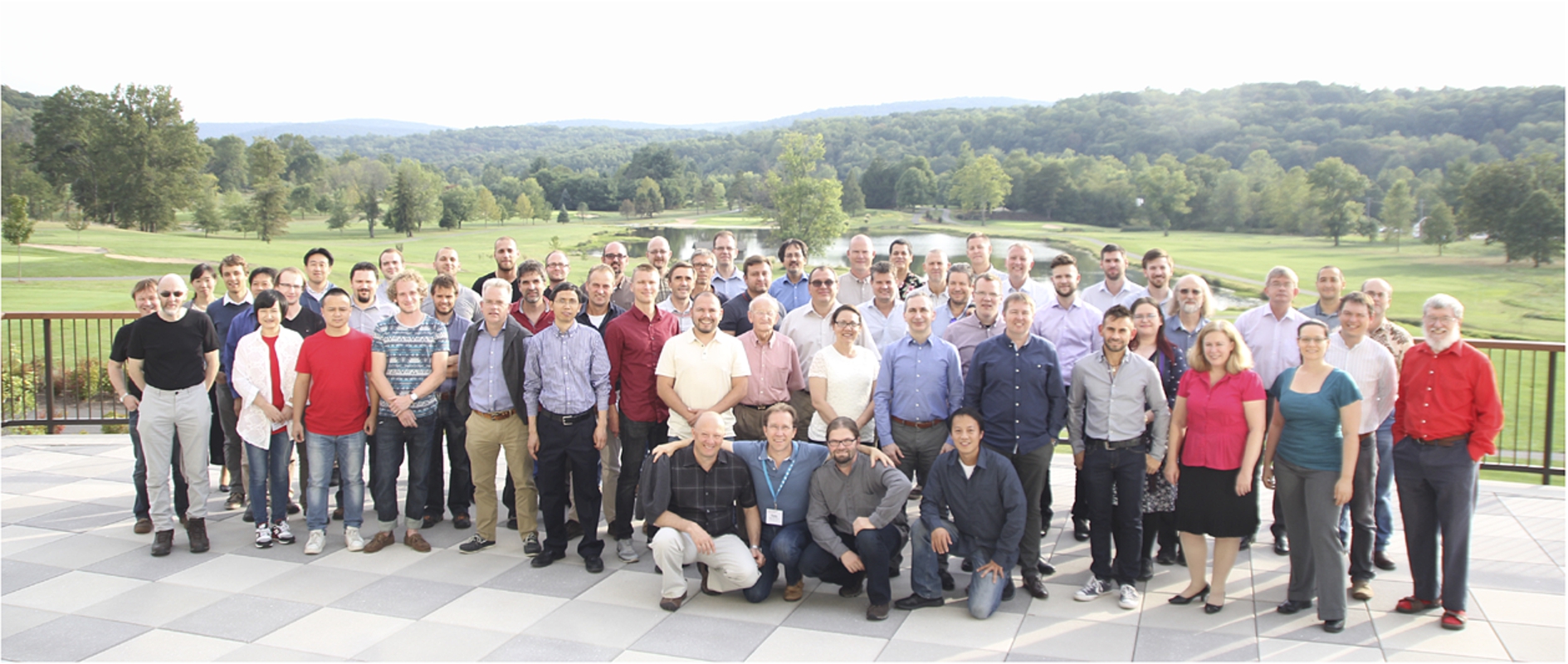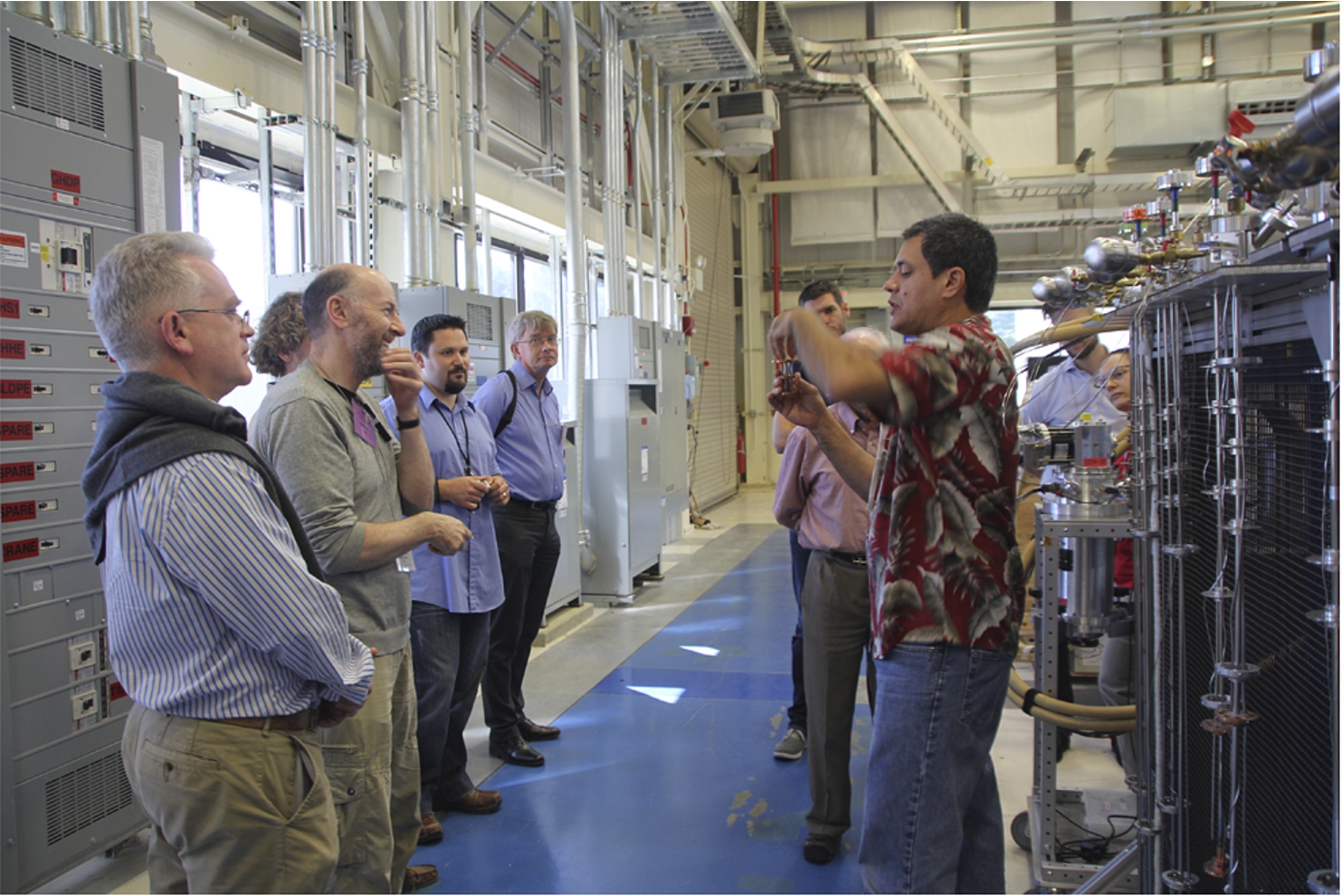International Workshop for Sample Environment at Scattering Facilities Organized by the NCNR and hosted by the University of Maryland Liberty Mountain Resort, Gettysburg, PA (USA) 19 – 22 September 2016
Co-editors’ names for these proceedings (ISSE executive board):
Yamali Hernandez (NCNR)
Paolo Imperia (ACNS)
Eddy Lelièvre-Berna (ILL)
In 1999, Michael Meißner proposed to gather the staff of neutron scattering facilities to promote collaborations between the teams developing sample environment equipment. This kick-off workshop, hosted by the former Hahn-Meitner-Institut (now Helmholtz-Zentrum Berlin), was mostly attended by European neutron scattering colleagues involved in sample environment development, mostly concerned with cryogenic systems, furnaces and high-pressure devices.
Fig. 1.
Participants of the

In the following years, the early meetings attracted colleagues from American and Austral-Asian facilities and very enthusiastic collaborators participated in a series of workshops organised in Europe and then overseas: at PSI (Switzerland) in 2001; ISIS (UK) in 2004; IPNS (USA) in 2006; ILL (France) in 2008 and FRM II (Germany) in 2010. The number of participants expanded to almost 100 as the European teams began working together within the framework of Joint Research Activity projects financed by the European Commission.
In 2012, at the workshop held at ANSTO (Australia), the Sample Environment community decided to create a society that would promote international cooperation, establish standards and organise workshops and schools. Klaus Kiefer (Chair, HZB, Germany), Paolo Imperia (Secretary, ANSTO, Australia) and Yamali Hernandez (Communication Officer, NCNR, USA) formed the first Executive Board and the International Society for Sample Environment was officially founded (ISSE – http://sampleenvironment.org).
Fig. 2.
As usual, discussions were lively and topics very varied. Here, we see Arno Hiess (ESS, Sweden) chairing the session on Cryogenics and Richard Down (ISIS, UK) answering questions on He recycling.

The
Fig. 3.
Participants visited the NIST Center for Neutron Research. Here, Juscelino Leão explains the specificities of special sample sticks.

Organised by the NCNR and hosted by the University of Maryland, the
At the end of the workshop, participants got the opportunity to visit the NIST Center for Neutron Research (Fig. 3) and the museum of the Gettysburg National Military Park (http://gettysburgfoundation.org). They got an excellent introduction to the Battle of Gettysburg followed by a VIP tour of the Cyclorama, the US nation’s largest painting that places visitors in the fury of Pickett’s charge on the third day of the battle. Lively but peaceful discussions took place on the technical evolution of arms and in particular ways to control bullet trajectories, before dining near the 11 exhibit galleries of this museum of the American Civil War.
Following Colin Carlile’s invitation, participants were encouraged to write the articles that are now gathered in this special issue of the Journal of Neutron Research. This is another significant step forward in expanding the knowledge and expertise sharing for the sample environment community that consists of almost 150 members that actively exchange tips and tricks and discuss the latest developments on the ISSE website forums.
In November 2017, the NCNR will organise the




